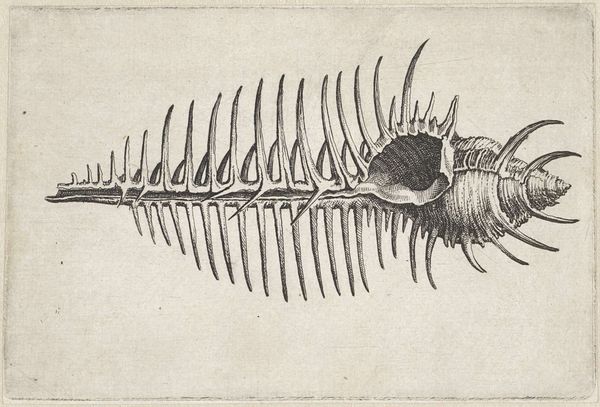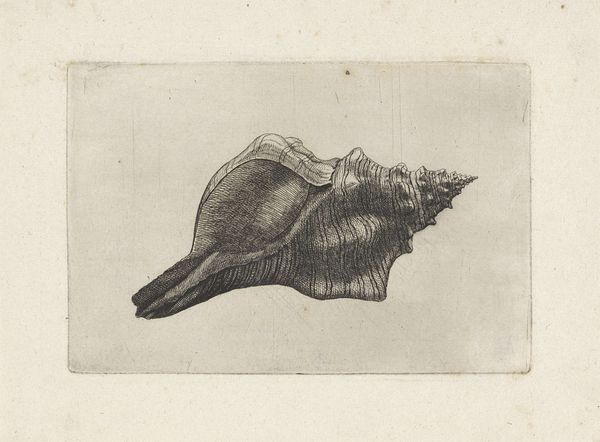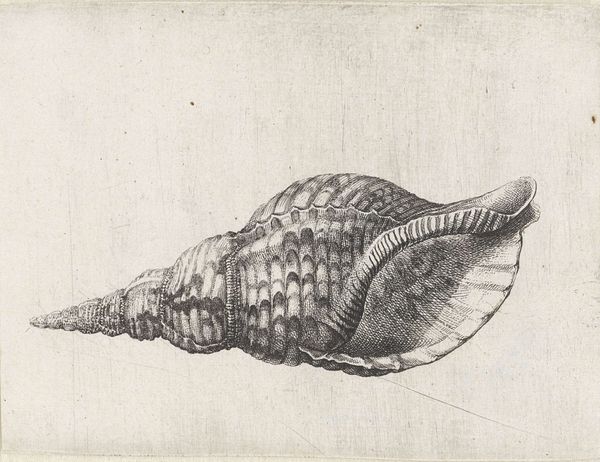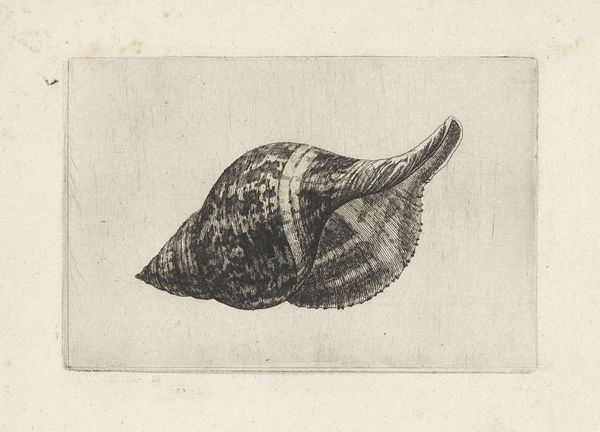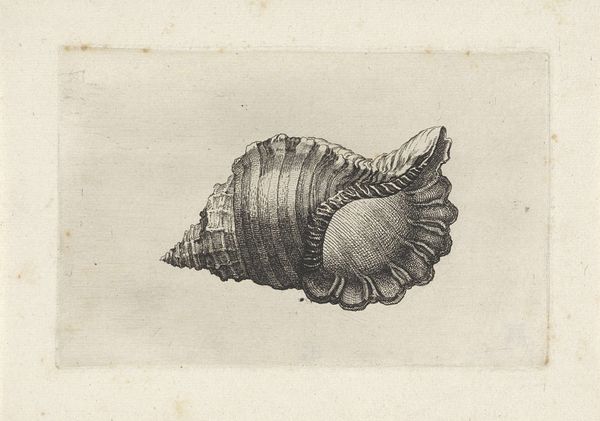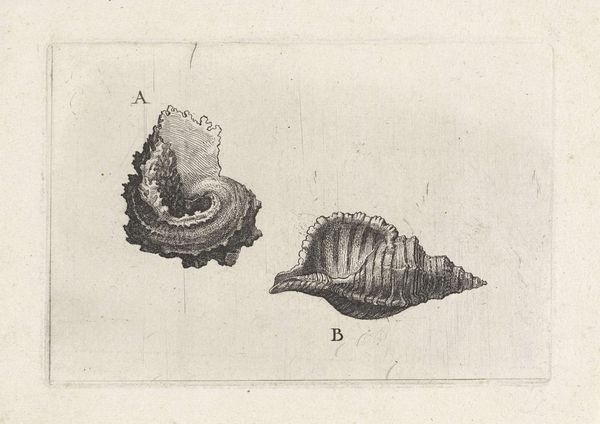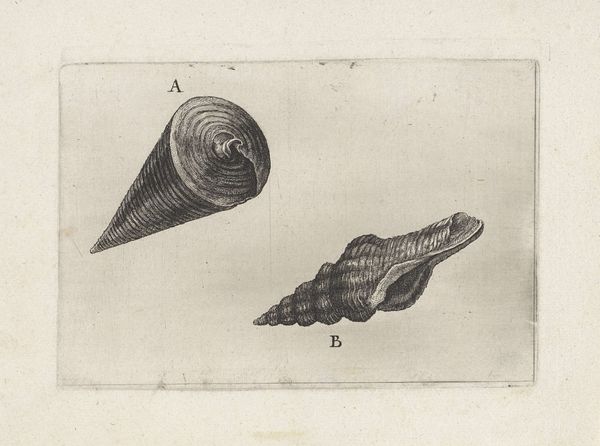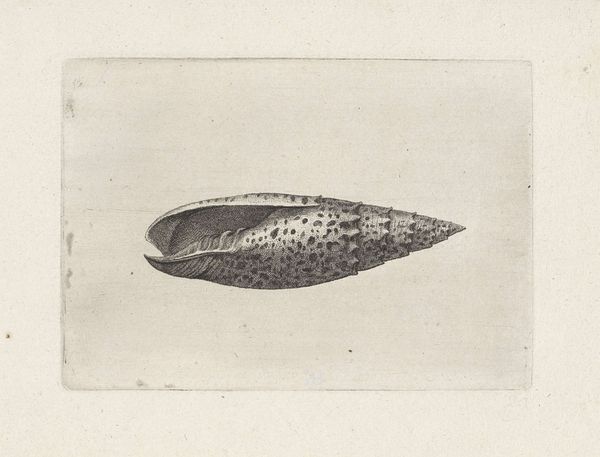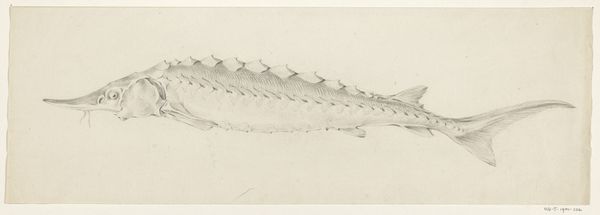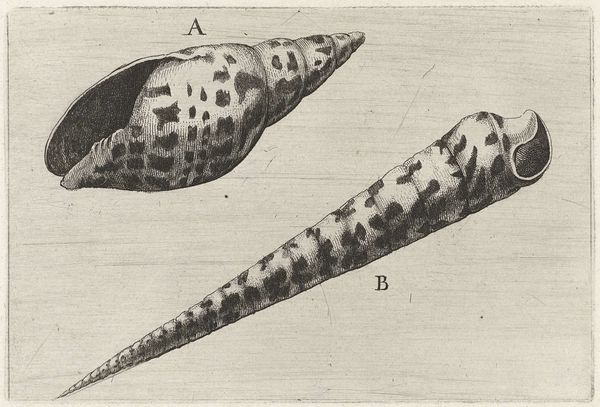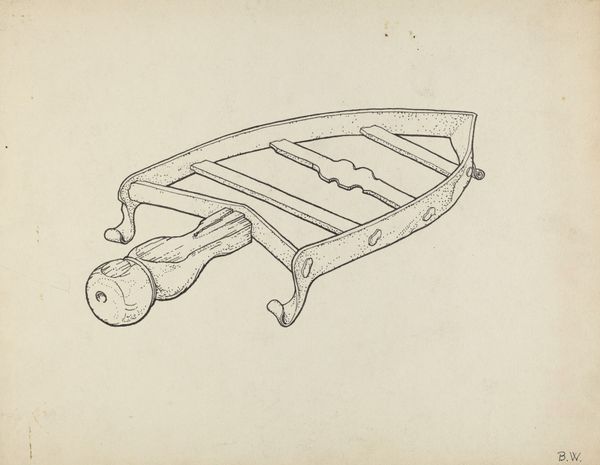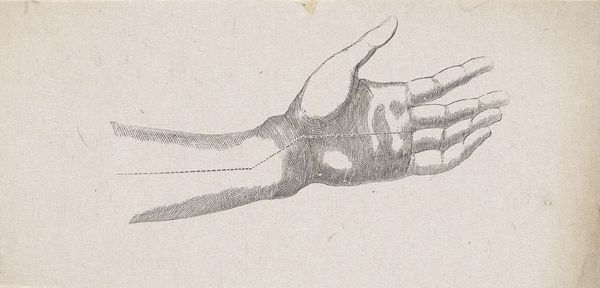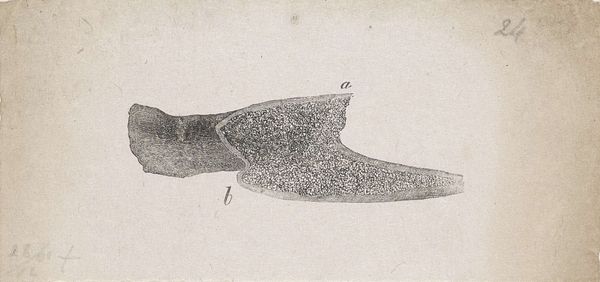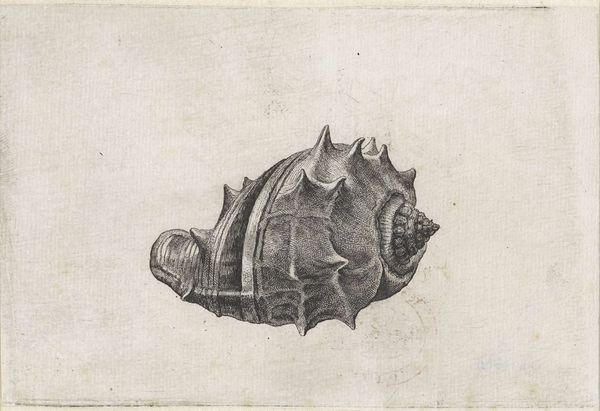
#
pencil drawn
#
aged paper
#
toned paper
#
light pencil work
#
pencil sketch
#
old engraving style
#
personal sketchbook
#
sketchbook drawing
#
pencil work
#
sketchbook art
Dimensions: height 93 mm, width 139 mm
Copyright: Rijks Museum: Open Domain
Wenceslaus Hollar created this etching of a shell, titled "Schelp, tibia fusus melanocheilus," likely in the mid-17th century. It exemplifies the period's fascination with the natural world and the burgeoning scientific interest in cataloging and understanding it. Hollar, born in Prague, was a prolific printmaker, known for his detailed depictions of animals, plants, and landscapes. Here, we see the shell rendered with meticulous accuracy, reflecting the emerging scientific aesthetic that valued empirical observation. The image is devoid of overt symbolism or narrative; its focus is purely on the shell's form and texture. The 17th century was a period of intense scientific and exploratory activity, with newly established institutions funding expeditions to collect exotic specimens from around the globe. These specimens often became prized possessions, displayed in cabinets of curiosities, reflecting the collector's wealth and knowledge. Hollar's prints, circulated widely, contributed to this culture of collecting and scientific inquiry. Understanding this print involves delving into the history of science, the rise of natural history collections, and the print market. It is through such contextual investigation that we can grasp its full significance.
Comments
No comments
Be the first to comment and join the conversation on the ultimate creative platform.
